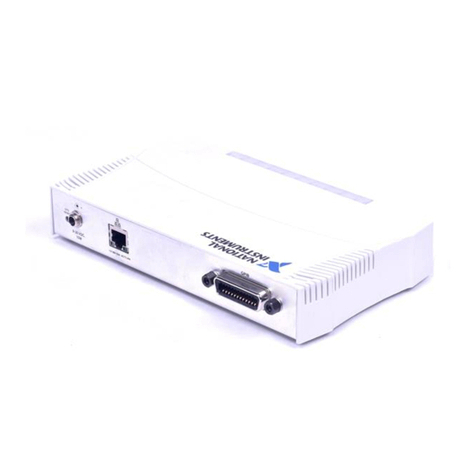
Note If you leave COM unconnected, the signals float outside the working
input range of the NI-9205. This may result in unreliable measurements
because there is no way to ensure that the input signal is within 10 V of
COM.
Connecting NRSE Voltage Signals
You can connect non-referenced single-ended (NRSE) signals to the NI-9205.
NI 9205
MUX
PGIA ADC
V1
V2
COM
AI1
AISENSE
AI0
+
+
–
–
In an NRSE configuration, the NI-9205 measures each channel with respect to
AISENSE. An NRSE configuration provides remote sense for the negative input of
the PGIA that is shared by all channels and also provides improved noise rejection
compared to an RSE connection.
Connecting to Wires to the NI-9205 with Spring
Terminal (Black Connector)
What to Use
■NI-9205 with spring terminal (black connector)
■ 0.08 mm2 to 1.0 mm2 (28 AWG to 18 AWG) copper conductor wire with 7 mm
(0.28 in.) of insulation stripped from the end
■Flathead screwdriver with a 2.3 mm x 1.0 mm (0.09 in. x 0.04 in.) blade,
included with the NI-9205
© National Instruments 9
NI-9205 Getting Started

































